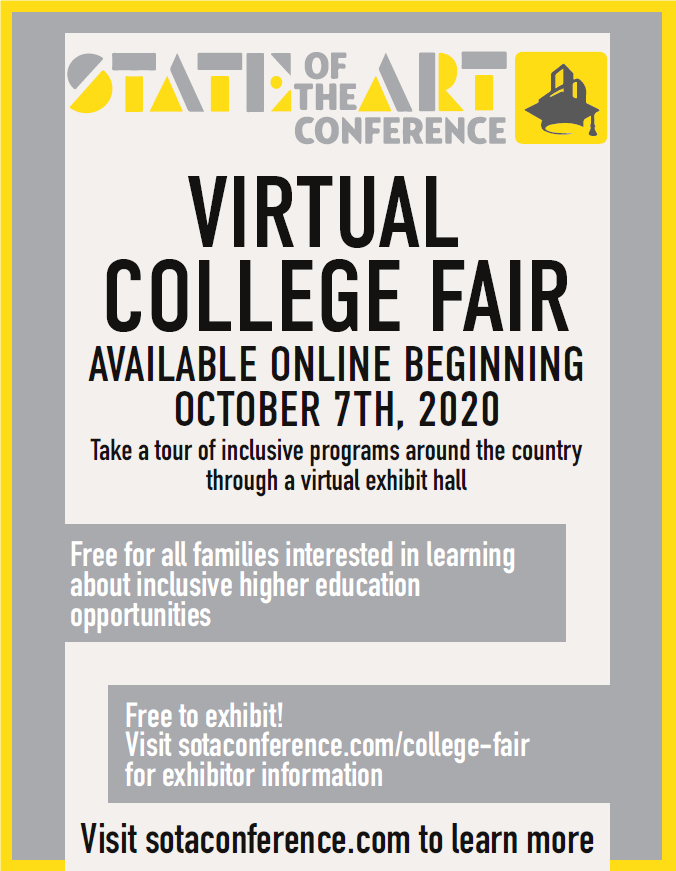By Erin MacLellan
More than anything, Austin Shirk wanted to be a Buckeye.

From his home in Allen, Texas, he’d cheer for the football team alongside his parents, Dina ’88 and Dave ’92, and he often went to games when visiting Ohio relatives. As he grew up, he dreamed of taking college classes at Ohio State, making new friends and finding a good job.
But his prospects for higher education seemed remote to Austin and his parents. Austin is among millions of people in this country with an intellectual or developmental disability, less than a quarter of whom go on to college after finishing high school, according to Think College, a national nonprofit working to raise that percentage.
As for finding a good job, “We were having a heck of a time getting anyone to give Austin a chance in Texas,” Dina said. Though her son enrolled in independent living and job training programs, they didn’t lead to jobs. Instead, he languished on waiting lists.
If local programs could not help Austin, the Shirks decided, then they would move on. They began searching for an alternative and could hardly believe it when their quest led to their alma mater.
Ohio State had created a program in 2011 called Transition Options in Postsecondary Settings, or TOPS, to provide personalized support to students with intellectual or developmental disabilities. The program is designed for students who want to learn life skills and find a job that matches their abilities and talents — all while experiencing the university’s vibrant academic and social life.
Austin had a chance to be a Buckeye.
He couldn’t fill out the TOPS application fast enough, and the Shirks waited nervously for the call. Then it came: He was in. “It was a big accomplishment, a big step to get into TOPS,” Austin said.
A world of firsts awaited Austin when he arrived in Columbus in 2014. While he was excited to be on campus, it was a big adjustment, and he would be living in his own apartment for the first time. Austin, who loved auditing classes with more “typical” Ohio State students, discovered a special interest he didn’t know of: “I enjoyed earth sciences, especially the lectures, labs and hands-on activities,” he said.
Based on that, his job coaches found him internships with the Nisonger Center Dental Program and a private dental clinic in Columbus, where he assembled instrumentation trays and sterilized equipment.
After completing the TOPS program in 2016, Austin went to work at the Wexner Medical Center where he supports the Central Sterile Supply department. His position pays a fair-market wage with full benefits, including retirement benefits and health insurance. “I love my job,” he said. “It’s worth going through the [challenges that accompany] being in TOPS.”
His manager, Jen Smith, is similarly delighted.
“Austin is so eager to learn new tasks, and he gets along with everyone,” Smith said. “I’ve never seen one human being get along so well with everyone.” It’s not just that Austin is nice; his contributions make the entire team more effective. “He can handle tasks that were taking our clinical staff away from production,” said Smith, who hopes to create another job with TOPS. “We would have two of Austin if we could.”
In helping students find their way as young adults, TOPS changes lives for entire families.
“I am so excited about Austin’s job,” Dina Shirk said. “When we got his diagnosis at age 10, the doctor said, ‘If I were you, I would teach him a few things and forget everything else.’ We never went back to him, and Austin has so exceeded those expectations.”
Source: MacLellan, Erin. “On Top of the World.” The Ohio State University Alumni Association, Ohio State Alumni Magazine, 2017, www.osu.edu/alumni/news/ohio-state-alumni-magazine/issues/march-april-2017/on-top-of-the-world.html.









